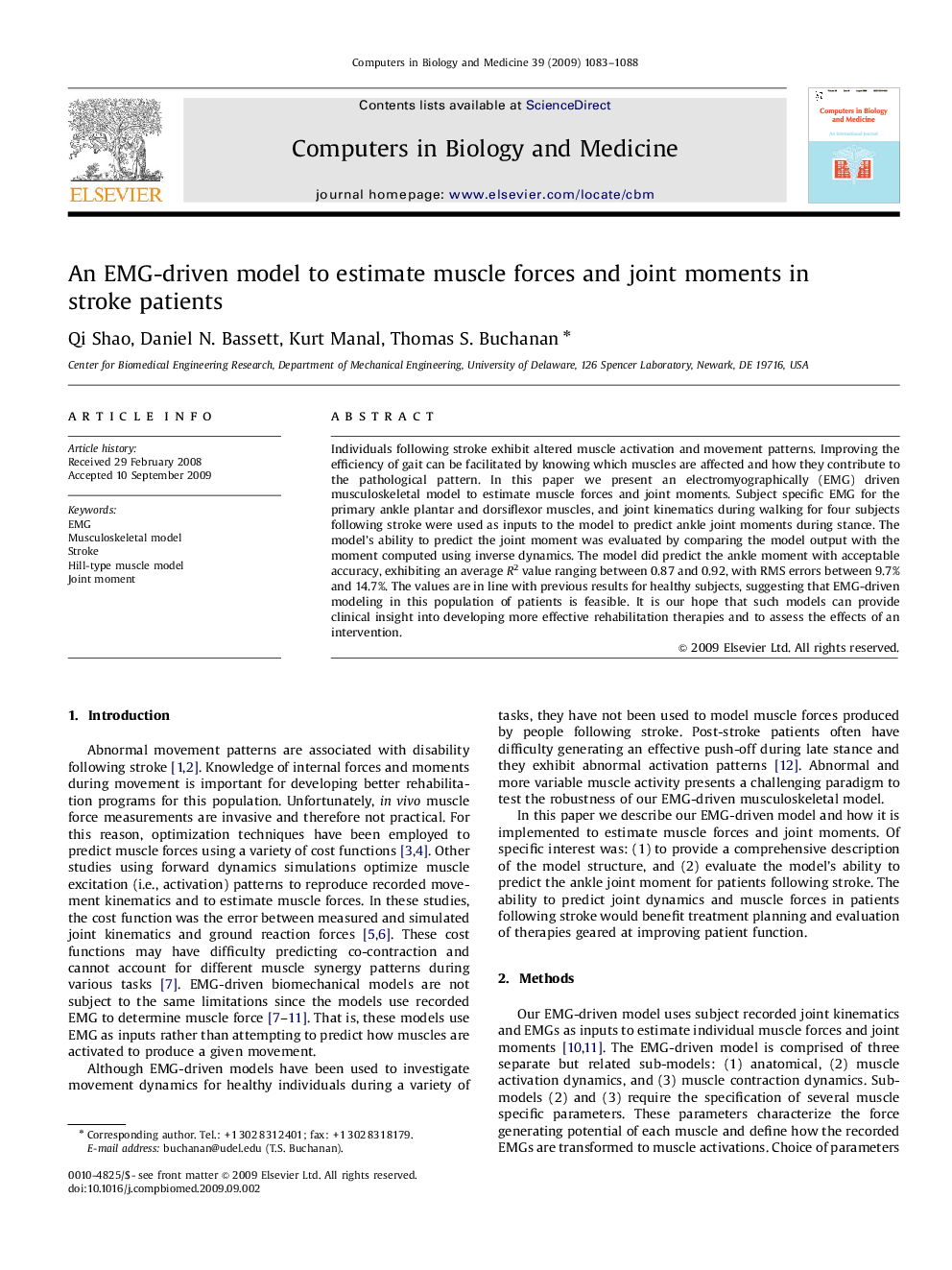| Article ID | Journal | Published Year | Pages | File Type |
|---|---|---|---|---|
| 505519 | Computers in Biology and Medicine | 2009 | 6 Pages |
Individuals following stroke exhibit altered muscle activation and movement patterns. Improving the efficiency of gait can be facilitated by knowing which muscles are affected and how they contribute to the pathological pattern. In this paper we present an electromyographically (EMG) driven musculoskeletal model to estimate muscle forces and joint moments. Subject specific EMG for the primary ankle plantar and dorsiflexor muscles, and joint kinematics during walking for four subjects following stroke were used as inputs to the model to predict ankle joint moments during stance. The model's ability to predict the joint moment was evaluated by comparing the model output with the moment computed using inverse dynamics. The model did predict the ankle moment with acceptable accuracy, exhibiting an average R2 value ranging between 0.87 and 0.92, with RMS errors between 9.7% and 14.7%. The values are in line with previous results for healthy subjects, suggesting that EMG-driven modeling in this population of patients is feasible. It is our hope that such models can provide clinical insight into developing more effective rehabilitation therapies and to assess the effects of an intervention.
